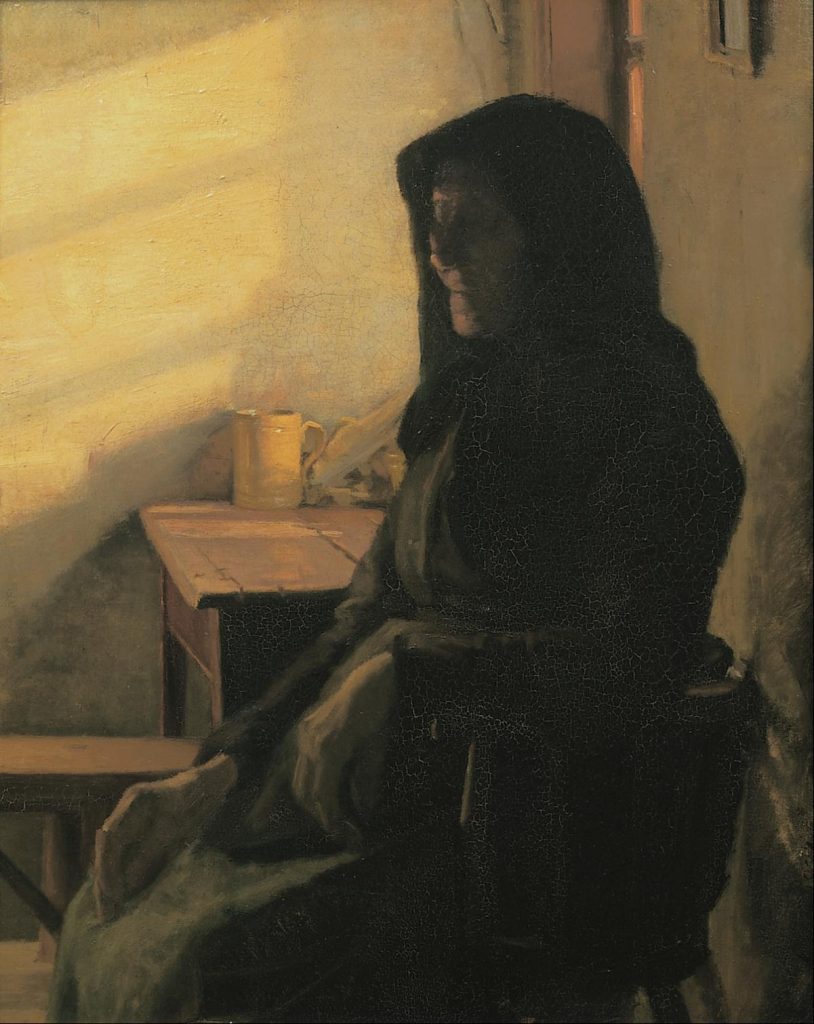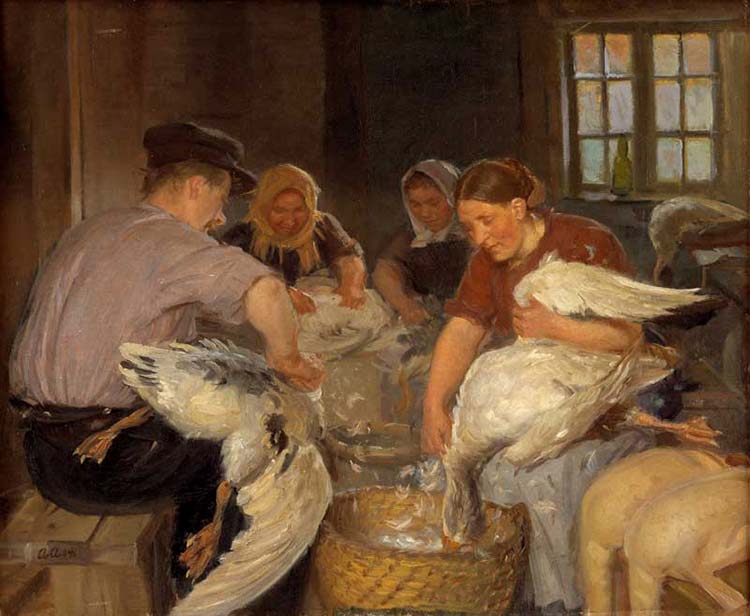Anna Ancher
Anna Ancher (1859 – 1935)
Anna Ancher was Danish artist associated with the Skagen Painters, an artist colony on the northern point of Jylland, Denmark. She is considered to be one of Denmark’s greatest visual artists.
Anna Kirstine Brøndum was born in Skagen, Denmark, the daughter of Ane Hedvig Møller and Erik Andersen Brøndum. She was the only one of the Skagen Painters who was born and grew up in Skagen. Her father owned the Brøndums Hotel where visiting artists gathered and displayed their work. The artistic talent of Anna Ancher became obvious at an early age and she became acquainted with pictorial art via the many artists who settled to paint in Skagen. She was a part of the colony her entire career, but found much of her inspriration abroad – especially in Paris.
While she studied drawing for three years at the Vilhelm Kyhn College of Painting in Copenhagen, she developed her own style and was a pioneer in observing the interplay of different colors in natural light. She also studied drawing in Paris at the atelier of Pierre Puvis de Chavannes.
In 1880 she married fellow painter Michael Ancher, whom she met in Skagen. They had one child, daughter Helga Ancher. Anna was encouraged and supported by her husband, who was a well known and popular realist painter. Despite pressure from society that married women should devote themselves solely to household duties, she continued painting after marriage and her work gained wide recognition.
She was considered to be one of the great Danish pictorial artists by virtue of her abilities as a character painter and colorist. Her art found its expression in Nordic art’s modern breakthrough toward a more truthful depiction of reality.
In 1884 Anna and Michael bought a large house on Skagen, and this became a hub for artists and their many visitors. In 1967, Anchers Hus was converted into a museum, the original furniture and paintings created by the Anchers and other Skagen artists are shown in the restored home and studio. It is filled with displays of paintings by Michael and Anna, as well as by many other Skagen painters who made up their circle of friends.
Style
Ancher preferred to paint interiors and simple themes from the everyday lives of the Skagen people, especially fishermen, women, and children. She was intensely preoccupied with exploring light and color. Her portrayal of local residents, such as The Old Blind Woman, and her mother in various room settings added to her reputation for sensitive and dignified treatment of her subjects. She also created more complex compositions such as A Funeral (1891). Anna Ancher’s works often represented Danish art abroad in official exhibitions.
Ancher was part of the “Modern Breakthrough,” a Scandinavian movement in art and literature that, like French Naturalism and Realism, rejected idealization, and instead sought to capture the “real.” Ancher, especially, sought to capture the fleeting effects of light on her canvases, demonstrating the influence of Impressionist works she saw during trips to Paris in 1885 and 1888. She painted primarily small-scale interior scenes, reminiscent of Johannes Vermeer and Jean-Baptiste-Simeon Chardin.












